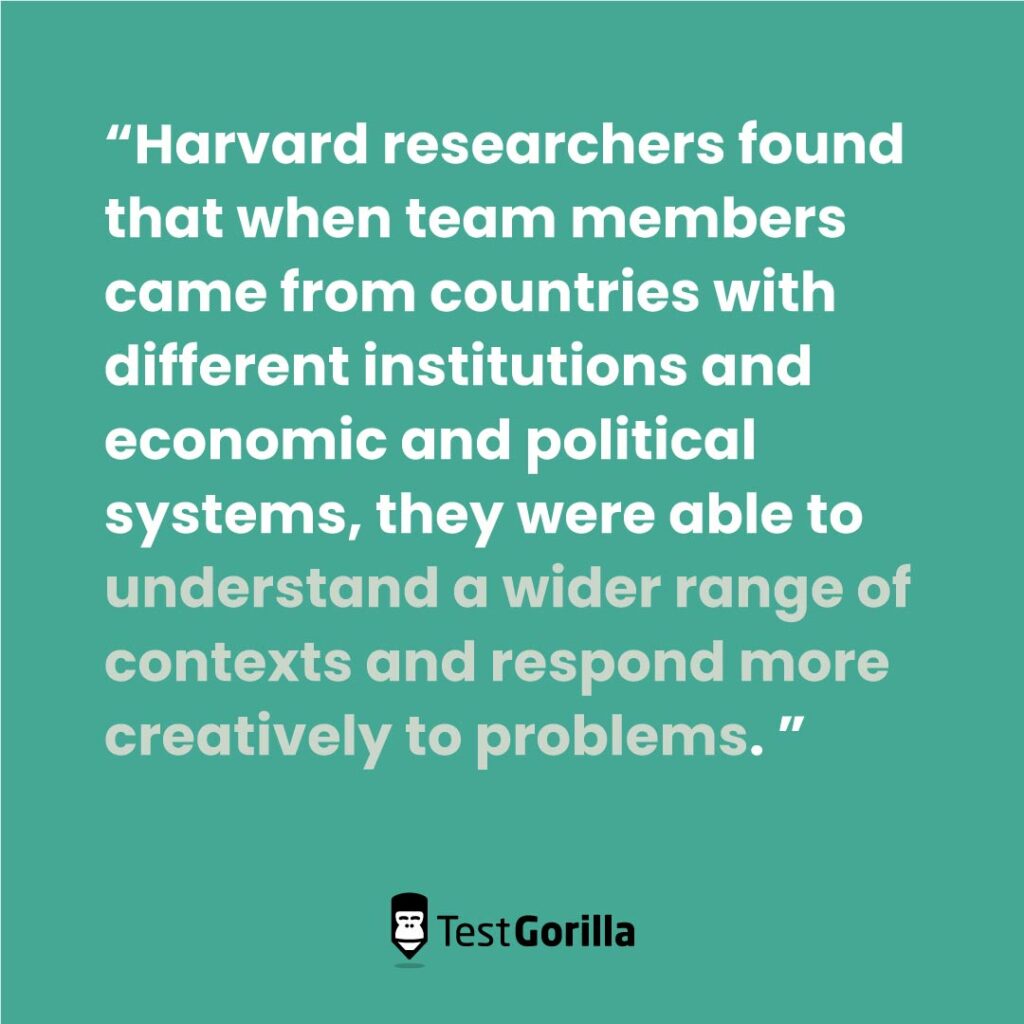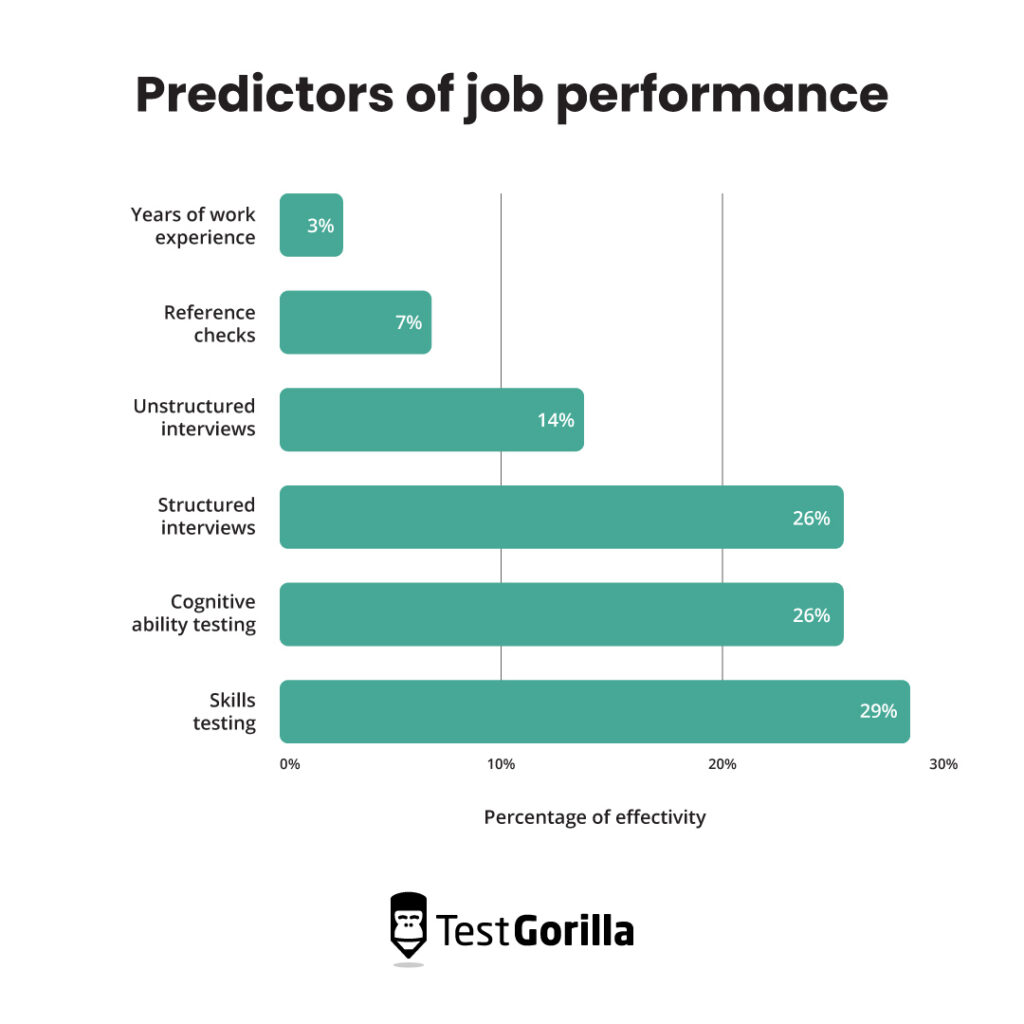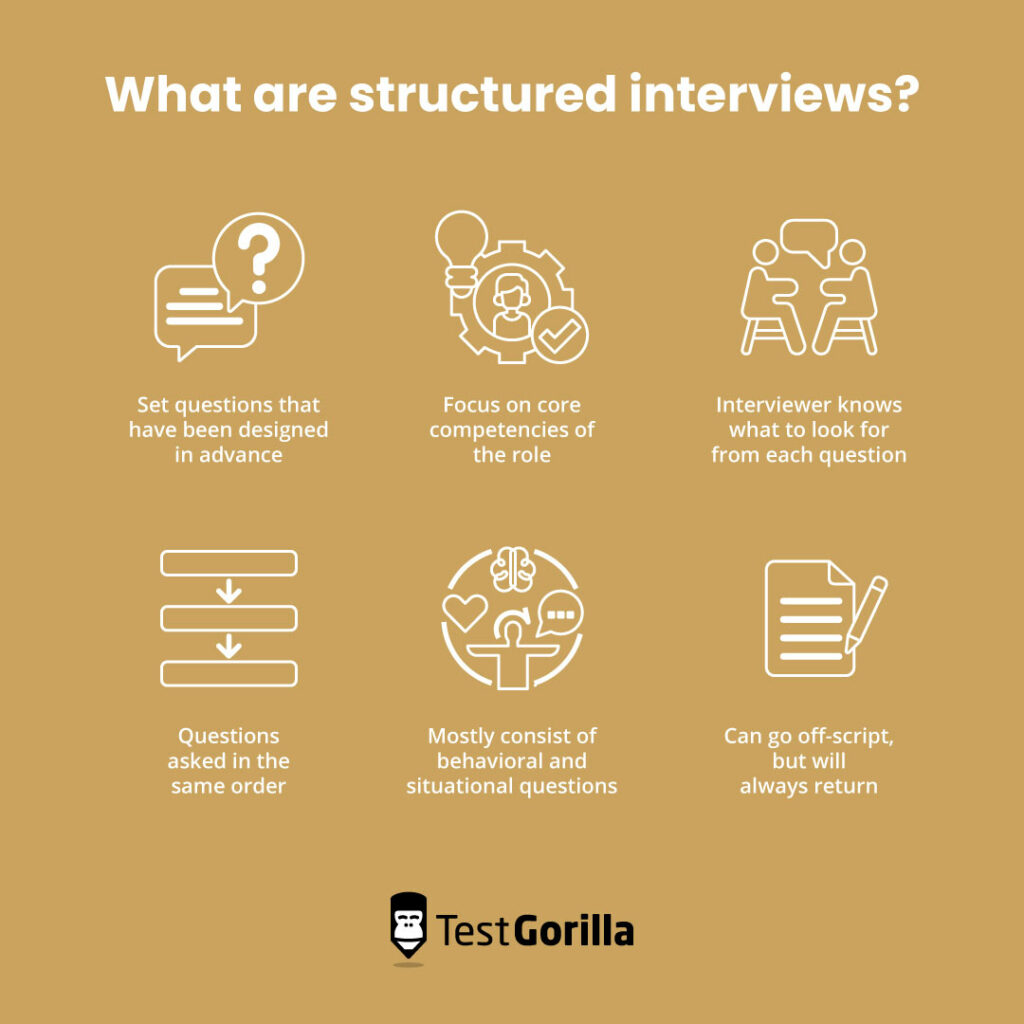How to leverage skills-based hiring for cross-cultural recruitment
The widespread uptake of remote recruiting techniques during the pandemic means that employers now have the tools to hire great talent, wherever they may come from around the globe.
But having the tools to recruit internationally is a bit like owning a priceless guitar: Just because you have one doesn’t automatically mean you can play a killer solo.
This is because there are many complex factors involved in international hiring, one of the biggest being that cultural norms vary between different countries.
Our cultural backgrounds affect everything from our personalities to which skills we use in our day-to-day roles, and this makes it particularly challenging to assess candidates when you open applications to a range of cultural backgrounds.
For example, in Western culture, it is usually considered polite to maintain eye contact with people when you speak to them in the workplace. In cultures like Japan, however, this can be considered a sign of disrespect.
How can you ensure that your skills tests and assessments are valid across different cultures (and varying cultural norms) to guarantee equality of opportunity for all your applicants?
In this blog, we take you through the benefits and challenges of cross-cultural recruitment and the skills-based hiring best practices you should be using to ensure bias-free recruitment.
Table of contents
- What is cross-cultural recruitment?
- Why is cross-cultural recruitment important?
- The difficulties of using traditional hiring methods for cross-cultural recruitment
- The benefits of using skills-based hiring to recruit across cultures
- 4 best practices for adapting your skills-based hiring approach across cultures
- Use skills tests to cut through cultural bias and hire candidates who add to your company culture
What is cross-cultural recruitment?
As you might expect, cross-cultural recruitment refers to hiring activity in which you recruit individuals from different cultural backgrounds. This might mean that they are from different:
Countries
Ethnicities
Religions
Political backgrounds
With individuals from several unique cultural backgrounds working together, people’s differences are often emphasized, especially when it comes to politeness and how they communicate with coworkers.
As mentioned above, eye contact is interpreted differently across cultures.
In Japan, too much eye contact is seen as a sign of disrespect. It’s such a significant cultural belief, in fact, that children are specifically taught to look at people’s necks when speaking to someone so that a person’s eyes are still in their peripheral vision.[1]
This is in stark contrast to Western countries, where direct eye contact is seen as a sign of confidence and paying attention.
That said, cultural norms around eye contact are only the tip of the iceberg when it comes to how cultural differences impact the workplace and hiring practices.
Why is cross-cultural recruitment important?
Cross-cultural recruitment might seem like more trouble than it’s worth. After all, logic dictates that if employees share a cultural background, they communicate and work together more easily because they have similar expectations of each other.
Why, then, should employers disrupt this status quo to create cross-cultural teams and businesses?
It gives you access to different markets
One of the most obvious reasons that recruiting cross-culturally benefits organizations is that it opens access to new global markets. This is particularly true if you’re recruiting specifically to extend your business into a new territory or territories, which more organizations are planning to do.
Out of 100 global businesses already operating in more than one country, 97% planned on expanding into new markets in 2023.
The most attractive territories into which countries were expanding include:[2]
Continental Europe (72%)
The United Kingdom (70%)
North America (58%)
Asia Pacific (58%)
Latin America (56%)
The Middle East (54%)
By hiring from a variety of cultural backgrounds, you tap into candidates’ local professional networks as well as their understanding of the market that they hail from.
This is obviously preferable to transplanting one of your domestic teams because they lack the local context. Though you may want to send over one person to help set up an international team.
It increases the diversity of thought in your workforce
The second big reason why cross-cultural recruitment is such a hot topic in 2023 is that cross-cultural diversity brings benefits to your workplace.
Employees from different cultural backgrounds likely think differently about problems and have different approaches to tackling them. This diversity of thought is a crucial aspect of workplace diversity.
Deloitte research shows that diversity of thinking increases innovation by about 20%.[3]
However, it needs delicate handling to succeed because the wrong mix of diverse candidates may sow disharmony and reduce productivity.
Harvard researchers found that when team members came from countries with different institutions and economic and political systems, they were able to understand a wider range of contexts and respond more creatively to problems.
They defined this as “contextual diversity,” and cautioned employers to balance it against “personal diversity,” when team members came from cultures with little overlap and had stark differences when it came to:
Age
Fluency in the team’s working language
Personality
The wrong kinds of personal diversity meant that employees found it less enjoyable to spend time together, had less trust and patience for each other and experienced more conflict.
The key is finding the right mix between diversity and similarity for teams to work together well.
The difficulties of using traditional hiring methods for cross-cultural recruitment
In traditional hiring, you have a few key tools to help you assess candidates:
Resumes
Unstructured interviews
References and background checks
All of these are complicated when it comes to cross-cultural recruitment – here’s why.
Resumes differ around the world
The resume is the golden goose of traditional hiring practices.
But here’s the thing: Resumes aren’t useful as screening tools, particularly in cross-cultural recruitment.
There are several reasons for this, but the first is that there’s no standard format for a resume. Even in a single cultural context, candidates include differing information in different formulations.
These differences get even bigger when you expand hiring across multiple cultures.
For instance, in Italy, it’s normal to include much more personal information in a resume than you would in the US, such as:[4]
Date of birth
Place of birth
Nationality
Marital status
Whether you hold a driver’s license
Resumes also create ample opportunities for bias in hiring, with recruiters eliminating candidates due to often unconscious prejudices about their race, gender, or country of origin.
Indeed, research shows that foreign candidates have significantly lower chances of receiving a positive response from employers than native candidates, with the gap getting bigger for candidates from the Middle East and Africa.
Another study found that recruiters were less likely to call back candidates who had “ethnic”-sounding names, particularly if they were women.
Resumes also inherently rely on educational bias for shortlisting candidates.
In 2021, HBR researchers found that more than 90% of employers use recruitment management systems to filter or rank potential candidates, with most of them using proxies like college degrees to signal attributes including skills and work ethic.
This approach discriminates against candidates from alternative skills backgrounds and cuts down on the diversity of your hiring.
Language barriers can be hard to navigate
A reliance on resumes can also make language barriers difficult to navigate for recruiters and candidates alike.
For example, written translation errors might put otherwise skilled candidates at a disadvantage.
However, there’s also the fact that you have to rely on reported qualifications – like someone writing “Professional fluency in French” on their resume – to assess their proficiency in different languages.
This means a candidate might make it all the way to the interview before you realize that their language skills aren’t up to scratch. They may get even further if the role requires fluency in multiple languages that you don’t speak.
These factors can cause major issues further down the line.
According to a survey of employees at multinational corporations, language barriers were one of the key reasons why 40% of global virtual teams were not successful, with customer-facing roles being particularly affected.[5]
Interviewer bias affects how cultural norms are interpreted
Finally, the core issue with traditional hiring is that you often cannot observe candidates’ skills directly.
Instead, they have to rely on indirect means of skills assessment like degree requirements or asking about skills during an interview.
This means that candidates succeed or fail based on how they come across to a hiring manager, which poses huge issues for bias when the two parties come from different cultures.
For example, recruiters in the US expect candidates to project confidence in interviews, emphasizing their good qualities and talking up the role they had in their teams’ past successes.
However, there are many cultures in which this is considered rude, and candidates would therefore shy away from such behavior, such as Australia, India, and Japan.[6]
An American hiring manager might interpret this humility as insecurity or a lack of relevant abilities, not having data on the candidates’ skills to challenge this assumption.
Different countries also have different expectations when it comes to working culture, and if hiring managers have too narrow an idea of how their organization can work, they might disqualify many skilled candidates.
For example, research has shown that organizations in Africa prioritize flexibility and agility in their working practices, while Middle Eastern and Eastern European firms prize stability in the way they run their businesses.
Interviewers would do well to have this in mind when asking questions to assess leadership and problem-solving ability.
The benefits of using skills-based hiring to recruit across cultures
Clearly, not being able to observe candidates’ skills directly holds cross-cultural recruitment back when using traditional methods.
The solution? Switching to a skills-based hiring approach, which is characterized by:
Pre-interview skills assessments
Structured interviews
Work samples
Here’s how skills-based hiring benefits cross-cultural recruitment.
Skills testing eliminates the need for resumes
As we’ve already discussed, the resume is not a good measure of a candidate’s proficiency, and ditching it is one of the main ways to reduce bias in your hiring process.
Skills testing enables you to test the key attributes needed for the role directly and anonymously, only inviting those who reach a certain proficiency level to interview.
You can then ditch exclusionary requirements like degrees and consider candidates who are skilled through alternative routes, also known as “STARs.”
Skills testing is also simply more effective.
The number of years of work experience a candidate has only correlates with job performance with 3% accuracy, according to a study at Google, whereas skills testing is almost 10 times as effective.[7]
You can use skills assessments to overcome language barriers
At TestGorilla, our tests are available in a variety of languages, enabling candidates from across cultures to demonstrate their skills to the best of their ability.
You can also, crucially, assess an applicant’s language skills directly with a language proficiency test prior to the interview.
This means that even if you aren’t fluent in all of the languages required for a role, you can still be sure that your candidates pass a certain threshold of language proficiency.
These elements are especially important when you’re hiring for a team in another country that will be in frequent contact with your head office. They’ll need both English fluency and the required language capabilities to work in their local context.
Test results provide a basis for data-driven decision-making
Finally, one of the most valuable things that skills testing provides is a foundation of objective data with which to make data-driven hiring decisions.
Not only does this make shortlisting candidates quicker and bias-free, but it also reduces interviewer bias when it comes time for face-to-face interaction, particularly when used in conjunction with a structured interview approach.
Unlike the traditional unstructured approach, structured interviews require that interviewers ask all candidates the same questions in the same order, and judge them by the same criteria.
You can use structured interviews to collect the same information from all candidates and form subjective judgments. They can then compare results to the data from skills assessments to ensure that their bias isn’t swaying them away from a great candidate.
The best part about this strategy? It works.
Our State of Skills-Based Hiring report found that 88% of organizations saw a reduction in mis-hires after switching to skills-based hiring.
4 best practices for adapting your skills-based hiring approach across cultures
Now that you know the broad ways in which skills-based hiring can improve your ability to assess candidates in cross-cultural recruitment, it’s time to find out how to do it.
Here are our skills-based cross-cultural recruitment best practices.
Best practices for skills-based hiring across cultures: Summary table
Hiring cross-culturally already? Unsure if you’re making the most of it?
Here’s a quick summary of the best practices you should be following:
Best practice for skills-based cross-cultural recruitment | Example actions |
Use tests that are accessible across your target markets | Make tests accessible in multiple languages Limit culture-specific references in test questions |
Identify which skills requirements remain the same across cultures | Determine the core hard skills for your open roles and make sure to always emphasize them |
Look for candidates who share your values and add to your company culture | Provide employees with a range of company values that they can draw from Use Motivation and Culture Add tests to identify candidates who share your vision |
Use tests not just to shortlist candidates, but to understand them | Rely on skills tests, like the Big Five (OCEAN) personality test, to illuminate how candidates think, not just what they can do |
1. Use tests that are accessible across your target markets
Firstly, it’s important to tailor your testing approach to each role and each target market.
This is especially true of the language you administer the tests in. At TestGorilla, many of our tests are available in multiple languages, including:
English
Spanish
French
Dutch
Portuguese (Brazil)
Italian
Japanese
It’s also a good idea to include language proficiency tests for the specific languages you know are important for the role, especially if you can’t directly assess candidates for these languages yourself.
Your hiring managers should also receive training on the cultural norms in different target markets because certain skills might be more prevalent in some markets.
For example, in cultures with a high “power distance” between team members and team leaders (in other words, where hierarchy is king), collaboration skills might be less important for managers because self-sufficiency is more highly prized.[8]
Understanding these differences in the “power distance” between managers and team members would help recruiters understand candidates’ differing responses to questions about leadership and conflict resolution.
For instance, let’s say you ask all your candidates a question about conflict resolution.
Managers in the US are likely to have an individualistic and egalitarian management style, and therefore resolve conflict by focusing on the mutual interests of the conflicting parties.
Japanese managers, on the other hand, put more emphasis on hierarchy and collectivism in their management styles. They might therefore resolve conflicts by putting emphasis on their relative social power.[9]
Differing cultural norms may also affect candidates’ answers to Communication tests.
In some cultures, including Japan, Korea, and Indonesia, effective communication is “high-context”: using sophisticated language and frequently requiring listeners to “read between the lines.”
In others, “low-context” speech is considered more effective, with listeners preferring prominent, simple, and direct communication. This is common in the US, Australia, and Canada.[10]
The impact of cultural norms on communication tests can be more significant than other assessments. However, you can minimize this issue by using tests that are accessible across cultures.
When developing new assessments at TestGorilla, we keep this in mind by:
Not using specific cultural references in our tests. Even if you don’t need to understand American football to answer a question, just mentioning it could confuse or alienate a candidate who is unfamiliar with it, so we avoid making these references.
Avoiding idioms, slang, or euphemistic language. It’s a skills test, not a vocabulary quiz. Although “COB” might be a familiar acronym to many people, candidates from other cultures might not recognize it, and including phrases like this distracts from the true nature of the assessment.
Excluding names from examples. Names of people are often culture-specific and signal to candidates from other cultures that the test wasn’t made with them in mind. When we do use names in our tests, we use names from a range of cultures to avoid bias.
Standardizing spelling and punctuation. We use Merriam-Webster to ensure that the most common spelling of any given word is used, so that you don’t trip candidates up with an unfamiliar spelling.
2. Identify which skills requirements remain the same across cultures
As well as understanding how the requirements of the role may differ from context to context, you also need to know which role requirements stay the same regardless of the cultural context.
For instance, if you’re hiring for a fully-remote and international team in which the working language is English, the job will require English fluency regardless of where candidates come from.
Otherwise, you may see the destructive “personal diversity” that Harvard researchers found hinders collaboration.
Generally speaking, the skills most likely to stay the same regardless of cultural context should be the core hard skills required for the role, particularly if the role is a technical one
Take the example of a web developer.
Python coding remains the same no matter which culture the developer hails from. So even though you might need to adapt your expectations of their communication or project management style, the Python coding requirement would stay the same.
3. Look for candidates who share your values and add to your company culture
This is perhaps the trickiest best practice on our list:
When recruiting across cultures, remember that the goal is to find candidates who share your underlying values or mission, but not necessarily the superficial characteristics of your company culture as you know it in your domestic context.
This can be challenging at times because your core values might be at odds with the cultural norms of your target country.
For example, if one of your core tenets is that “A good idea can come from anywhere,” you might struggle to find candidates who embrace this philosophy in countries where hierarchies are more rigid.
It might also affect how international teams work together.
Thai culture places a strong emphasis on avoiding mistakes and group decision-making. Before a meeting, Thai teams might want ample time to prepare their response to an agenda and make suggestions.
By contrast, an American team might expect to send a last-minute agenda and ask for recommendations on the fly. Thai teams could interpret this as a lack of respect for their way of working or their ideas.
To avoid this kind of cultural conflict, the Harvard Business Review recommends that organizations identify the dimensions of difference between the corporate culture and local ones, and ensure that every cultural group has a voice when designing processes.[11]
It helps to have a diverse set of company culture norms to draw from. All of these values might be referenced by all employees, with certain ones coming out more in certain cultures.
This is called “within-employee diversity,” and it’s been linked to greater innovation.[12]
Once you identify where your company culture overlaps with the cultural norms of your target market, you can use Motivation and Culture Add tests to ensure all candidates share your underlying mission.
4. Use tests not just to shortlist candidates, but to understand them
Finally, don’t only look at skills testing as a box-ticking exercise to check that candidates have the skills they need to perform well in the role.
Skills tests can also be a valuable source of information about the beliefs and habits that underpin a candidate’s working style or personality type.
This is especially important in cross-cultural hiring, where interviewers’ cultural biases might cause them to jump to conclusions about why candidates display certain traits.
For example, a Western recruiter might assume that the reason a candidate says they would wait for confirmation from leaders to pursue a new project is that they lack initiative. However, in many cultures, this is a necessary sign of respect.
One test you might use to gain this kind of deeper insight is the “Big 5” (OCEAN) personality test, which evaluates five overarching dimensions of personality: openness, conscientiousness, extroversion, agreeableness, and emotional stability.
Interpreting the results of a Big 5 personality assessment can illuminate:
How candidates align with your company values
What training opportunities might be most useful to them
What avenues for inquiry you should pursue during the interview process
Use skills tests to cut through cultural bias and hire candidates who add to your company culture
In this blog, we’ve discussed:
What cross-cultural recruitment is
Why it’s important
How skills-based hiring can make it easier
How to maximize skills-based hiring techniques to hire across cultures without bias
Now, it’s up to you to leverage these tactics to improve your cross-culture hiring process for future business success.
To get started hiring international teams, check out our guide to remote recruiting.
Or if you’re already in the thick of cross-cultural recruitment efforts, take a look at our Big Five Personality test and Culture Add test to find candidates who align with your values, regardless of their cultural background.
Sources
Uono, Shota; Hietanen, Jari K. (February 25, 2015). “Eye Contact Perception in the West and East: A Cross-Cultural Study”. PLoS One. Retrieved March 30, 2023. https://www.ncbi.nlm.nih.gov/pmc/articles/PMC4340785/
“International expansion set to take off in 2022”. (January 17, 2022). Auxadi. Retrieved March 30, 2023. https://www.auxadi.com/news/international-expansion-set-to-take-off-in-2022/
Bourke, Juliet. (January 22, 2018). “The diversity and inclusion revolution: Eight powerful truths”. Deloitte Review, issue 22. Retrieved March 29, 2023. https://www2.deloitte.com/us/en/insights/deloitte-review/issue-22/diversity-and-inclusion-at-work-eight-powerful-truths.html
“Writing an Effective Italian CV”. (n.d.). Jobseeker. Retrieved March 29, 2023. https://www.jobseeker.com/en/cv/articles/italian-cv
“Driving Global Readiness: A Road Map”. (January 2015). Rosetta Stone. Retrieved March 29, 2023. https://resources.rosettastone.com/CDN/us/pdfs/Driving-Global-Readiness-A-Road-Map.pdf
Clark, Dory; Molinsky, Andy. (March 21, 2014). “Self-Promotion for Professionals from Countries Where Bragging Is Bad”. Harvard Business Review. Retrieved March 29, 2023. https://hbr.org/2014/03/self-promotion-for-professionals-from-countries-where-bragging-is-bad
Bock, Laszlo. (April 7, 2015). “Here’s Google’s Secret to Hiring the Best People”. WIRED. Retrieved March 30, 2023.
“Hofstede’s Cultural Dimensions”. (n.d.). Center for Global Engagement, James Madison University. Retrieved March 30, 2023. https://www.jmu.edu/global/isss/resources/global-campus-toolkit/files/hofstede-power.pdf
Allan, Jeffrey X. (May 2015). “Japanese Conflict Resolution: Cultural Differences, Contrasts, and Styles”. University of North Dakota. Retrieved March 30, 2023. https://www.researchgate.net/publication/276205023\_Japanese\_Conflict\_Resolution\_Cultural\_Differences\_Contrasts\_and\_Styles
Honorio, Daniela. (February 23, 2021). “The Cultural Differences Impact in Recruitment”. LinkedIn. Retrieved March 30, 2023. https://www.linkedin.com/pulse/cultural-differences-impact-recruitment-daniela-honorio/
Meyer, Erin. (October 2015). “When Culture Doesn’t Translate”. Harvard Business Review. Retrieved March 30, 2023. https://hbr.org/2015/10/when-culture-doesnt-translate
Corritore, Matt. (July 4, 2018). “Does Focusing on Cultural Fit Harm Innovation?”. Medium. Retrieved March 30, 2023. https://medium.com/@mattcorritore/does-focusing-on-cultural-fit-harm-innovation-37e5113aaaef
Related posts
You've scrolled this far
Why not try TestGorilla for free, and see what happens when you put skills first.
Latest posts
The best advice on pre-employment testing, in your inbox.
No spam. Unsubscribe at any time.

Hire the best. No bias. No stress.
Our screening tests identify the best candidates and make your hiring decisions faster, easier, and bias-free.
Free resources
This checklist covers key features you should look for when choosing a skills testing platform
This resource will help you develop an onboarding checklist for new hires.
How to assess your candidates' attention to detail.
Learn how to get human resources certified through HRCI or SHRM.
Learn how you can improve the level of talent at your company.
Learn how CapitalT reduced hiring bias with online skills assessments.
Learn how to make the resume process more efficient and more effective.
Improve your hiring strategy with these 7 critical recruitment metrics.
Learn how Sukhi decreased time spent reviewing resumes by 83%!
Hire more efficiently with these hacks that 99% of recruiters aren't using.
Make a business case for diversity and inclusion initiatives with this data.






















